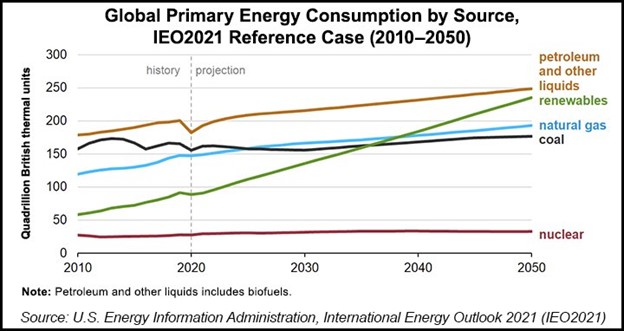Colorado’s renewable energy frenzy has been met with an array of positive news. It’s viewed as clean, modern, and the best alternative to break America’s addiction to fossil fuels. But as facts about recycling the first generation of solar and wind-farm materials emerge, the long-held perception of renewables as a panacea becomes unsustainable.
READ: Understanding ESG & Colorado’s Energy Transformation
The International Renewable Energy Agency (IRENA) projects that “large amounts of annual waste are anticipated by the early 2030s” as the solar boom progresses. According to IRENA, the amount of solar panel waste could total 78 million tons annually by 2050.
A similar concern exists in the wind industry. Thousands of tons of windmill blades and giant wind towers, rising as high as 500 feet, are currently disposed of in landfills, largely due to a lack of consistent state regulations governing the retirement and disposal of wind farms. The thousands of colossal concrete pads that serve as the base for each wind tower are also simply left in place in perpetuity. The turbine blades are built with a planned life of 20 to 25 years and contain chemicals that can become hazardous after burial in a landfill, yet the government has not caught on. While technologies exist to recycle the blades, the wind industry has been slow to adopt them due to the high cost.
Solar panels also possess a similarly limited life cycle, and, like lithium-ion and other batteries, contain chemicals and metals, such as lead, that create environmental hazards as they degrade. Like the wind industry, the panels can be recycled, but the high cost has prevented large-scale adoption, despite heavy subsidization by the federal and state governments. The National Renewable Energy Laboratory estimates that less than 10% of the country’s decommissioned panels are recycled, mainly due to cost. The price to recycle a single panel is about $15 to $45 for a silicon PV module in the US, compared to only $1 to $5 to dump it in a landfill.
Should Coloradans worry? As primarily a headwater state, meaning most of our water begins here and flows out to the Rocky Mountains, toxic leakage into our rivers is particularly concerning. It was only seven years ago when three million gallons of contaminated water turned the Animas River orange.
READ: Water Pipeline Back in Play? — The Future of Colorado’s Water Distribution
Environmental and safety concerns are not new in the energy landscape. For example, determining the appropriate distance between oil and gas operations, often referred to as setbacks, used to be a major contention in Colorado. And it doesn’t stop there. The impact on water, air, wildlife and the landscape have all been debated and are now all highly regulated here. But it took years of contentious community discussions, public hearings, legislative compromise and collaboration. Today, operators seem to have struck the right balance of production and protection.
Despite the known hazardous magnitude, the federal and many state governments in the U.S. have not enacted consistent regulations governing the disposal of the massive waste created by these new industries. If the Biden administration’s envisioned energy transition is to progress as planned, a resolution to this toxic issue is mandatory. While most support the expansion of new energy sources, it makes little sense to do it at such a cost to the environment it is supposed to improve.
READ: Biden is Right About One Thing — Oil and Natural Gas Aren’t Going Anywhere
It comes down to fairness. Why should some industries like oil, gas, coal or nuclear be held to one standard while others like solar and wind are held to another?
There’s no doubt that an energy transformation is underway. After all, energy is the foundation of everything, and finding ways to produce it more efficiently and responsibly is a no-brainer. Everything evolves and energy is no different. But all sources have benefits and drawbacks. Perfect energy does not exist, and the pitfalls must be addressed and remedied. As an environmental leader, this is Colorado’s opportunity to shine. The next step is to proceed responsibly, fairly and transparently.


